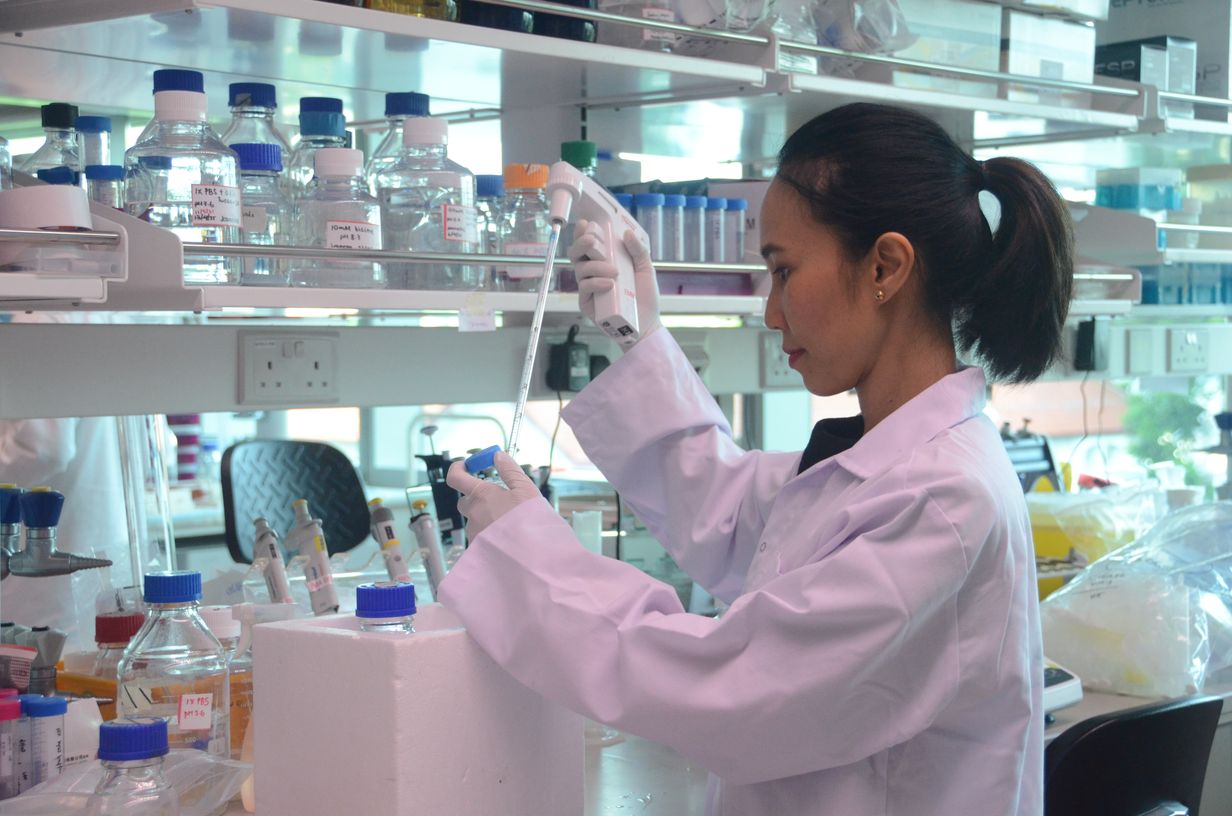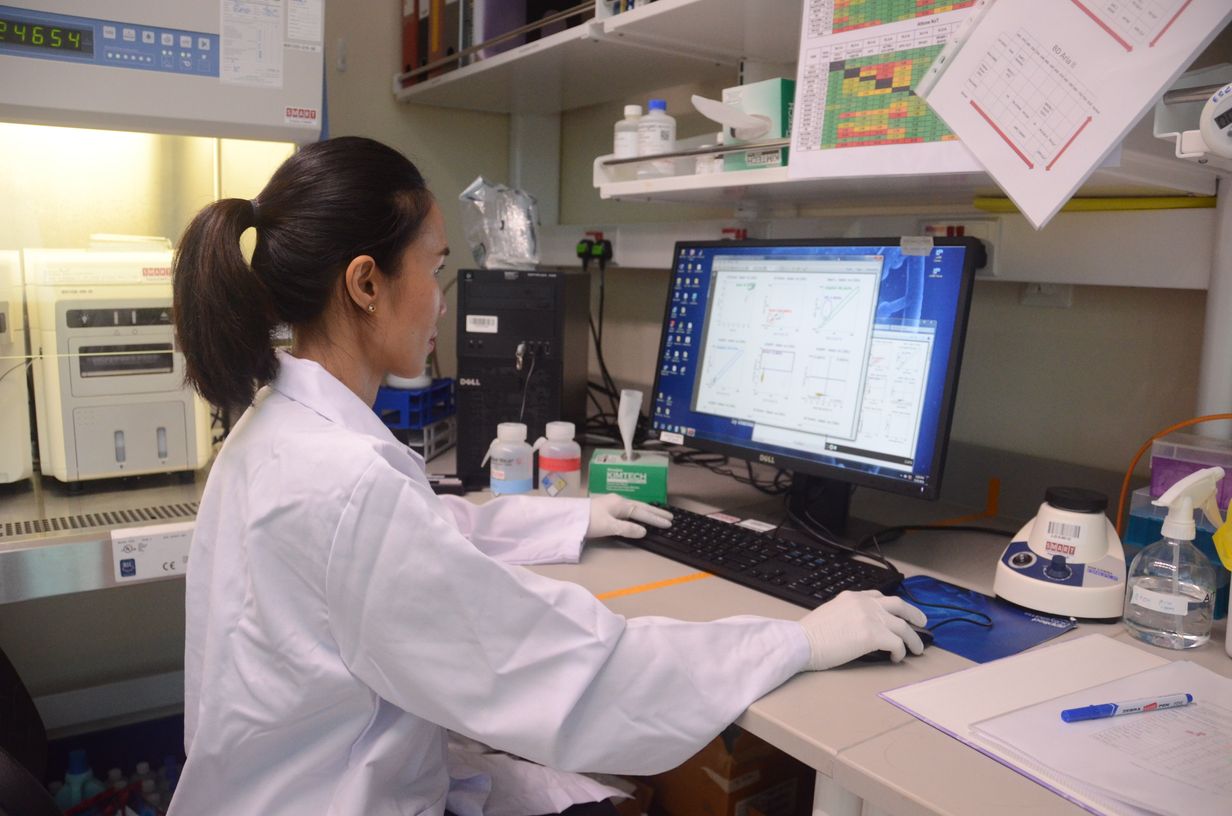Research scientist Dr. Patthara Kongsuphol and her colleagues have spent the past year developing rapid non-invasive paper-based tests for COVID-19. Going by their initial plan and research, the team has opted to focus on two different tests that would alleviate existing challenges faced with COVID-19 tests, and be ready for use when of borders and economies open up. The project is being undertaken at the Antimicrobial Resistance (AMR) Interdisciplinary Research Group (IRG) at Singapore-MIT Alliance for Research and Technology (SMART) where Dr. Kongsuphol works as a research scientist.

“With an increasing demand for the opening up of borders, economies, and society, having the right test, diagnostic, and information will be crucial to not only plan for this future but also ensure that it can be done safely without hampering current efforts to curb the spread of the virus,” Dr. Kongsuphol explains.
The first test, a rapid saliva-based antigen test, would reduce existing challenges faced in COVID testing, such as the manpower crunch, turnaround times, and requirement of laboratory and sophisticated equipment.
Meanwhile, the second, a rapid neutralizing antibody (nAb) test, will be able to detect the presence of neutralizing antibodies that provide protective immunity against the SARS-CoV-2 virus. “What this means is that we would be able to determine if an individual, whether vaccinated or not, possesses protective immunity to the virus. In turn, this would provide critical information to decision-makers if an individual is safe to enter a venue, event, or country,” Dr. Kongsuphol elaborates. Once a person is determined to possess the nAb against the SARS-CoV-2 virus, there is a lower chance of infection; this would also mean that the individual would less likely be a carrier for COVID-19. In the short term, the nAb test would also be able to evaluate the longevity of protection provided by vaccines in individuals.
- HOW IT WORKS
- A SCIENTIFIC BASIS
- ACCURACY & EFFICACY
- FUTURE UNDERTAKINGS
How It Works
When a virus (or a vaccine) gets into the body, the body will generate antibodies that recognize the virus and signal the body to kill the virus utilizing white blood cells. These antibodies serve as an alert to the immune system, but not all antibodies prevent the virus from infecting cells.
Neutralizing antibodies (nAb) are a type of antibody that is produced naturally as part of an individual’s immune response, and can be triggered by both infections and vaccinations. As their name suggests, these antibodies are able to prevent viruses from infecting cells - rendering the virus unable to replicate, thus reducing or preventing severe disease outcomes. In this case, nAb tests will specifically detect nAbs in an individual, and determine individual protective immunity status against a virus, and for a COVID nAb test, protective immunity status against SARS-CoV-2.
“We have recently completed the first prototype for our nAb test and are currently conducting tests using clinical samples,” Dr. Kongsuphol reveals. “Once the tests have been completed, we will finalize the prototype nAb test and submit it for regulatory approval. We expect to complete these within this year, and begin manufacturing the tests for public use.
On top of detecting the wild-type SARS-CoV-2 virus (which is the common/original variant), the nAb test that Dr. Kongsuphol and her team are developing will be able to specifically monitor immunity against the other variants of the virus with only a simple modification. Monitoring of immunity against the variants will provide information on the potential efficacy of different vaccines against each variant, at a large scale, and whether or not you should travel to areas that may have a high incidence of each variant, at a personal scale.

- HOW IT WORKS
- A SCIENTIFIC BASIS
- ACCURACY & EFFICACY
- FUTURE UNDERTAKINGS
A Scientific Basis
“Our nAb test uses proprietary protein engineering technology that was developed at SMART AMR and the Hadley D. Sikes lab at MIT. This same technology has also been used to develop tests for the detection of other well-known viruses such as the Zika virus and Tuberculosis”, Dr. Kongsuphol elaborates.
“We only need a drop of fingertip blood that would be mixed with reaction solutions and placed on a paper strip. The paper strip would then be inserted into a reader device that will detect the nAb signals and show the results, all within 10 minutes,” she continues. “It really is as simple and straightforward as that for the end-user, though on the backend, this is only possible through years of research, innovation, and hard work by our dedicated team at SMART AMR, MIT and our collaborators.
- HOW IT WORKS
- A SCIENTIFIC BASIS
- ACCURACY & EFFICACY
- FUTURE UNDERTAKINGS
Accuracy & Efficacy
Based on their current clinical tests and results, the team’s nAb test has comparable accuracy to laboratory-based tests with only a drop of fingertip blood, showing results within 10 minutes, says Dr. Kongsuphol. It can also be used at most places outside of laboratories for point-of-care testing, without the need for elaborate infrastructure or sophisticated equipment.
“Current and similar nAb tests usually require the drawing of venous blood from a vein by a trained professional, which would then be processed as plasma or serum. This would take at least an hour and up to two days, with the fastest within 30 minutes so far, before being able to generate the test result.
“Using our proprietary protein engineering technology, tests would only require a simple reaction of the blood against a solution, which can be easily captured on paper test strips. As such, our nAb COVID test would be faster, infrastructure- and equipment-light, while only requiring basic training for a layperson to conduct the test - which would ease the manpower crunch that is currently faced.” A big focus of their test, made possible by its features, is that it can also be conducted anytime, anywhere, making it effective for immediate point-of-care testing and mass monitoring of events, a specific locality, or at high traffic points and critical points of entries such as immigration checkpoints.

- HOW IT WORKS
- A SCIENTIFIC BASIS
- ACCURACY & EFFICACY
- FUTURE UNDERTAKINGS
Future Undertakings
The undertaking involves different organizations and agencies, explains Dr. Kongsuphol. “Our current research and development of tests at SMART are supported by the National Research Foundation (NRF) Singapore, under its Campus for Research Excellence and Technological Enterprise (CREATE) program, the National Medical Research Council (NMRC), under its COVID-19 Research Fund, and National Health Innovation Centre (NHIC), under its Gap funding scheme, as well the Temasek Foundation.”
The goal of this particular research project is to provide proof-of-concept and build up a technology foundation for the envisioned product, which the team has achieved. The same team that has developed the tests at SMART has also spun off a biotech startup, Thrixen, that will seek to develop the test into a commercially-ready product, and we look forward to realizing the research into real-world impact that would improve the lives of many.
“Concurrent to the rapid nAb test, we have also developed a rapid saliva-based antigen (Ag) test that shows results in five minutes on a paper strip. We have finalized the prototype for the rapid saliva-based Ag test and are currently evaluating its performance using live virus and clinical samples.”
The rapid saliva-based Ag test is similar to the conventional COVID tests which seek to detect COVID-19 infections and determine if an individual is infected by the SARS-CoV-2 virus. Similar to the nAb test, the vision for the Ag test would be a rapid, immediate point-of-care test that can be used anytime, anywhere, without the need for sophisticated equipment, by laypeople with minimal training.
“Our colleagues at SMART have also been working on a variety of research related to the COVID-19 pandemic. This ranges from agri-tech research that would alleviate food security concerns to wastewater surveillance methods for COVID-19, among other research that seeks to future-proof society against future pandemics and unforeseen circumstances in the face of an ever-changing reality.”














 Back
Back